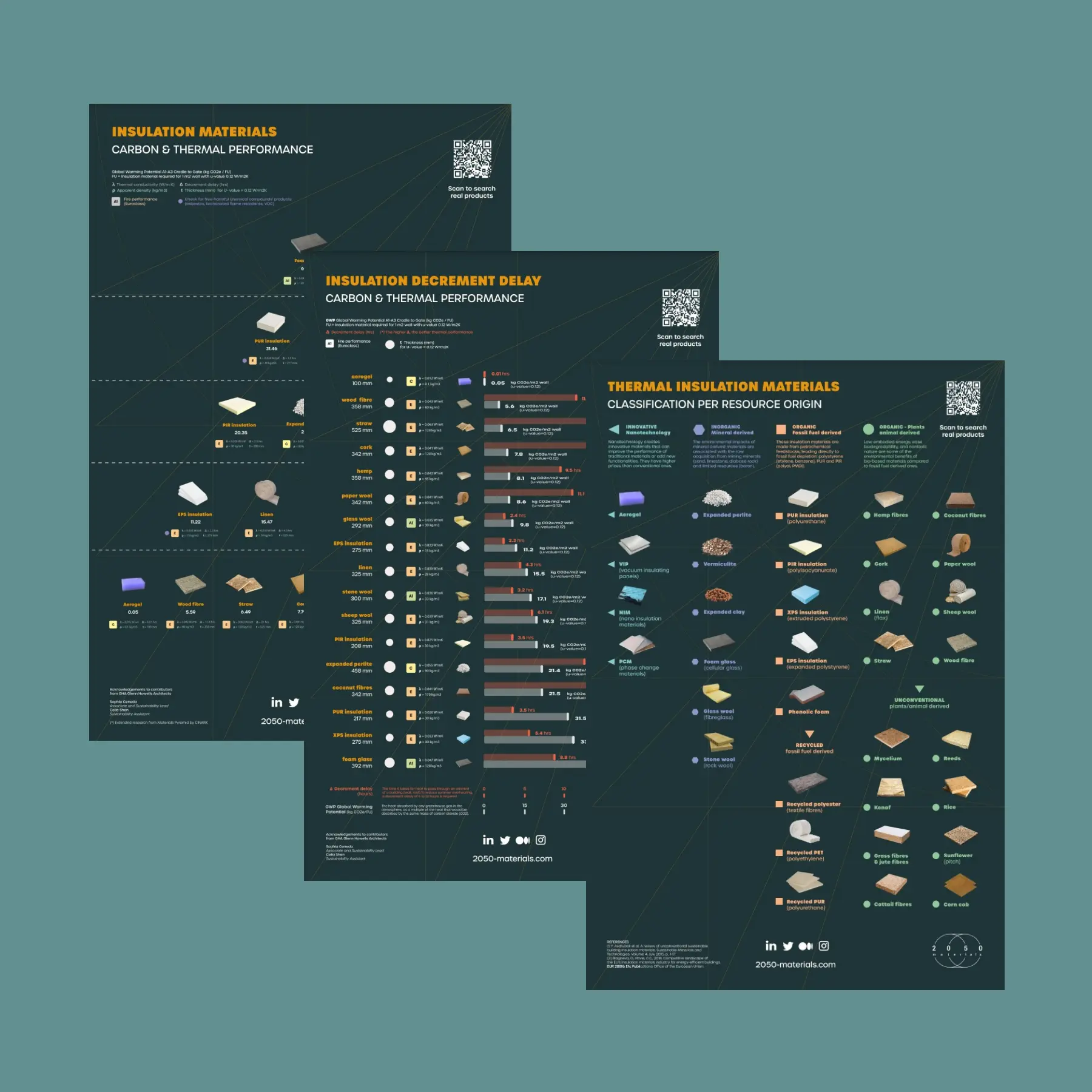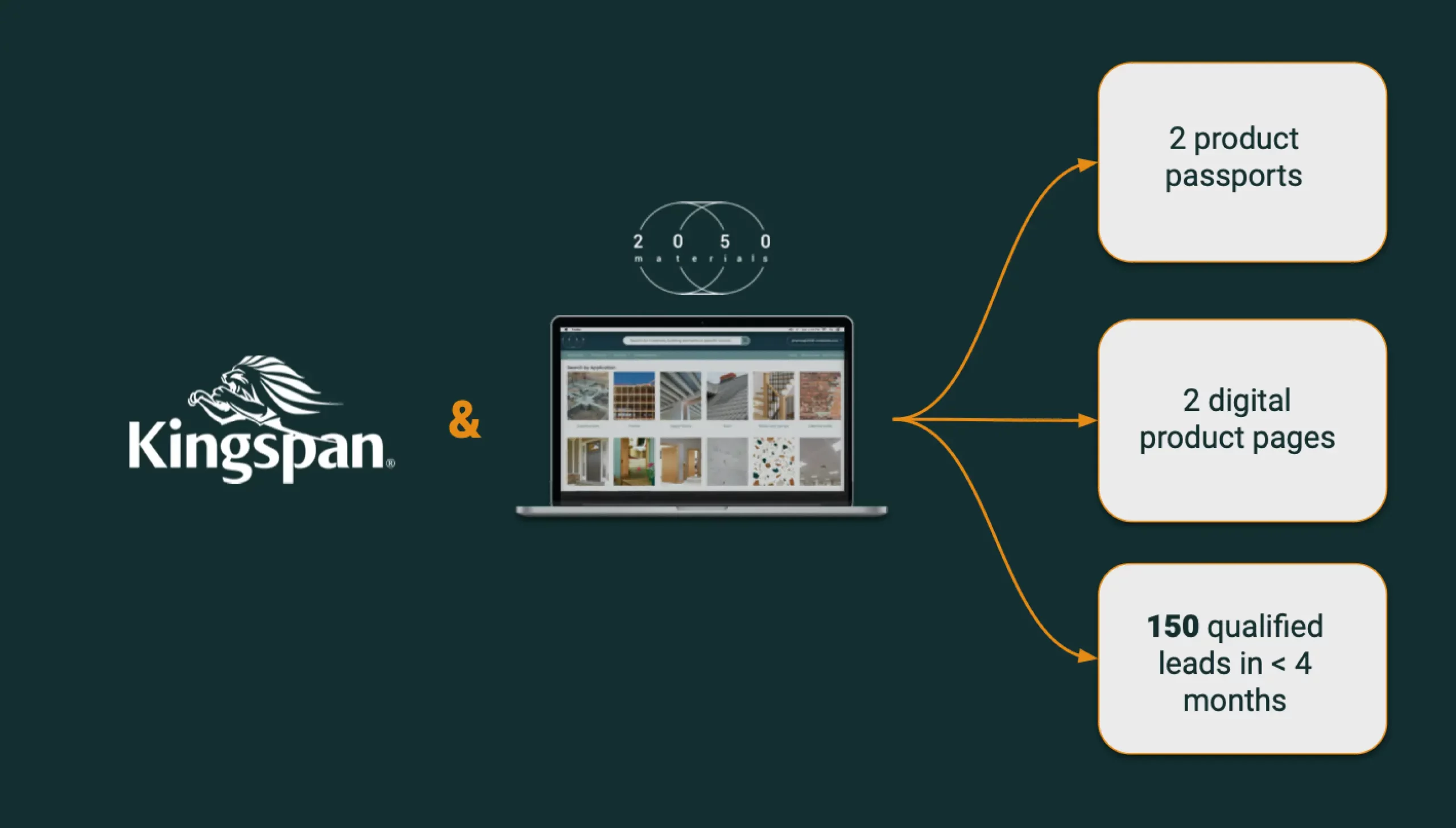llustrated Guides to Insulation Materials

According to our research, insulation materials offering a high decrement delay and a low carbon footprint are biobased such as straw (21 hr, 6.5 kg CO2e/m2 wall), cork (16 hr, 7.8 kg CO2e/m2 wall), wood fibre (11.4 hr, 5.6 kg CO2e/m2 wall), paper wool (11.1 hr, 8.6 kg CO2e/m2 wall) and hemp (9.5 hr, 8.1 kg CO2e/m2 wall). In the opposite scenario, there are mineral and fossil fuel-derived insulation materials whose use in buildings is paradoxically the most conventional, such as foam glass (8.8 hr, 69.6 kg CO2e/m2 wall), PUR (3.5 hr, 31.5 kg CO2e/m2 wall) and XPS (5.4 hr, 33.1 kg CO2e/m2 wall).
Analysing the GWP and other environmental indicators through the whole Life Cycle Assessment (LCA) of building materials helps us understand the consumption of resources, energy, and water involved in the manufacturing process, hence its environmental impact and contribution to Global Warming. Based on around 2200 EPDs (Environmental Products Declarations) compiled in 2050 Materials database and free-use platform, we have studied the carbon performance of 17 thermal insulation products of different resource origins.
You can read the full piece we wrote on the matter that includes all the details in this article.
What’s Inside
- Guide to Insulation Materials: carbon and thermal performance
- Guide to Insulation Decrement Delay: carbon and thermal performance
- Guide to Thermal Insulation Materials: classification per resource origin
Why This Handbook Bundle Matters
“Fast growing bio-based agricultural materials can store carbon in less than a decade and provide a realistic solution for building materials. Positive change can be created quickly by creating both supply push (agriculture) and demand pull (public procurement and regulatory demand)”, explains Guillaume Habert in this article.
We encourage designers to research and implement other alternatives of insulation materials like biobased in their projects.
Our Illustrated Guides to Insulation Materials offer visual guides to understand the variety of insulation materials, their carbon and thermal performance and their classification per resource origin.
Related articles

Case Study: Kingspan Data & Flooring and 2050 Materials
2050 Materials tackled challenges Kingspan Data & Flooring was facing with a streamlined onboarding process, gathering sustainability certifications, and digitizing data for informative product pages.
Read more
Your Go-to Guide for Cladding Specification
At 2050 Materials, we believe in the power of data-driven choices to drive the construction industry towards sustainability and climate neutrality. This handbook is a step forward in our mission to equip you with the data and insights needed for impactful decision-making.
Read more